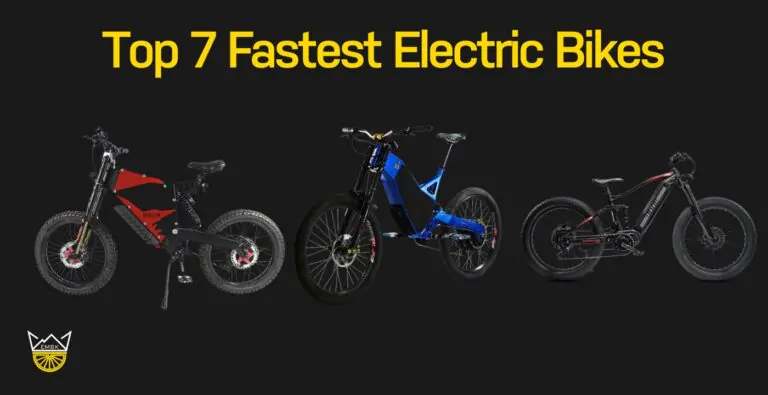In the world of e-MTBing the smallest things can make an enormous amount of difference out on the trails. Setting your bike up incorrectly can cause you real headaches and seriously affect your riding experience.
Alongside getting your bike size right, one of the most important areas to pay attention to is your saddle position – it can transform your riding experience and performance if you get it spot on. But how do you get your MTB saddle position correct? And what are the pitfalls of poor mountain bike posture?
A Good MTB Saddle Position…
- Improves pedalling efficiency
- Improves ride performance
- Reduces injury
- Reduces tiredness
- Reduces lactic acid build-up
Why is Mountain Bike Seat Height Important?

Injury Prevention
It may seem insignificant, but getting your mountain bike seat height wrong can be a nightmare. Firstly, it can cause you real discomfort – we aren’t just talking about a sore bum here, we’re talking about potential injuries arising.
If your seat is too high then your knees lock out at the bottom of the pedal stroke, which puts real pressure on your knee joints. If the seat is too low, it also puts too much pressure through your kneecaps and can cause a lot of tightness in your hips.
If your bike saddle position is too far back, and you have to stretch too much for the handle bars, it can put a lot of strain through your lower back and shoulders. Getting your mountain bike seat height correct can prevent these sorts of MTB injuries or at least drastically reduce the chance of picking one up.
Improved Performance
Having the correct MTB saddle position improves your pedalling performance. If your seat is too low or high for your body your pedal strokes won’t be efficient. When your seat is too low you end up not being able to emit as much power as you potentially could do, instead you’re having to grind down low.
Similarly, if your seat is too high, you might lock your knees out at the bottom of the stroke, which is nowhere near as powerful as if you had a decent MTB saddle position. The right mountain bike riding position improves your pedalling efficiency and overall performance.
Reduced Lactic Acid
If you have the wrong MTB saddle position and your pedalling efficiency is poor, you’re likely to tire quicker and feel the lactic acid build up more. Poor positioning can lead to a burning sensation in your things as you try and grind the pedals around.
If your mountain biking riding position is too low your legs are scrunched up low to the pedals, which means that lactic acid builds up and they don’t have opportunity to stretch out to relieve the pressure. If your legs can’t stretch out they will tire more quickly and you’ll feel more uncomfortable.
How High Should Your Seat Be?
Every rider’s body mechanics are different and riding styles can be slightly different, so there isn’t a specific correct height for a bike seat. However, there are some indicators you can look at to see if you’ve got it correct for you.

The Hip Bone Method
One of the simplest ways to check your MTB saddle position quickly is to line the MTB seat post to the same level as your hip bone. You can measure this by standing facing forward next to your bike and moving your seat post up and down until the saddle meets your hip.
When you sit on the bike and the pedals are at the lowest point, your knees shouldn’t lock out – there should still be a slight bend. This isn’t an exact science, but for many people this provides a decent, comfortable riding position and is about correct.
How Do I Know if I’ve Got My MTB Saddle Position Incorrect?
If you’ve already found a comfortable seating position by using the hip bone method, which we mentioned above, then you need to take your MTB or e-MTB to the trails. Go on a steady ride, around a fairly basic loop. Be aware of how it feels out on that ride – questions to ask yourself include:
- Do you feel any discomfort?
- What is your knee and leg positioning like during the bottom and top of your pedal stroke?
- Are your knees locking out?
- Do you feel like you’re emitting the most power you can?
- Do you feel any unexpected burning in your muscles?
If you do have any issues, then you may need to move your seat height slightly up or down. If there are any issues, then make sure to play with your MTB saddle position and keep doing trail loops, until you feel nice and comfortable.
ℹ️ It’s important to note that your MTB saddle position might need to be changed depending on whether you’re clipped in or whether you’re just using trainers.
When you’re clipped into your pedals, you have a set position, which might feel uncomfortable compared to your trainers, which you can move around along the pedals.
What Should I Do if My MTB Saddle Position Still Feels Incorrect?
Professional Bike Fitting

If you haven’t managed to get comfortable on your MTB or e-MTB or if you feel any sign of pain, then make sure to get yourself down to your local bike shop for a professional fitting. Many dedicated bike shops offer a far more scientific approach to getting the correct riding position on a mountain bike.
A bike fitting professional will take many different body measurements – such as height, leg length, arm length etc. – then check your flexibility, through a number of special exercises, to see whether you feel comfortable on the bike.
Many fitters place bikes on a turbo trainer – which is a stationary bike stand, with a roller underneath – which means you can cycle on your bike inside a shop, in a stationary position. They will analyse your positioning and comfort while riding on a turbo trainer and judge whether any changes need to be made to your MTB saddle position and MTB seat post height.
ℹ️ Professional bike fittings aren’t cheap. If you’re working to a budget, it might not be the best option and you should play around with your MTB saddle position yourself, by doing small loops and tweaking it. If the budget isn’t a worry, then get yourself down to your local bike shop for a pro fitting.
Continually Reappraise Your Positioning
Our bodies change over time – if you’re a younger rider, you may get taller and therefore need a different MTB saddle position. You might put on weight or lose weight or change your riding style. You might be moving into a certain discipline of MTBing, which requires a more aggressive riding position.
All of these may require you to change your MTB saddle position or MTB saddle height – so keep reappraising how you feel on your bike and don’t be afraid of making changes or be lazy with your setup.
Final Thoughts
Your MTB saddle position and MTB seat height can make or break a day’s riding. If you ride with a poor MTB saddle position for a long time it can lead to long-term injuries, regular discomfort while riding and seriously impinge on your riding performance.
Take time over your bike set-up, don’t be afraid to tweak your ride until you feel comfortable and if it doesn’t feel right after a lot of trial runs, then go and seek some professional help and advice. Remember, you never want to lock out your knees while pedalling or have your knees tickling your chest on a ride. You also don’t want to be stretching too far to the handlebars.
All of these indicate poor MTB saddle position. Instead, you want a slight bend in the knee at the bottom of the pedal stroke and feel comfortable while reaching for the handlebars – without pain or discomfort.
You might end up spending many hours, days, weeks or even years, in that MTB saddle, so take the time and consideration to get it set-up right initially. Nothing is stopping you now, so get out there, check your positioning and spin off into the sunset!
If you enjoyed this guide, then make sure to check out our full e-MTB set-up guide.



